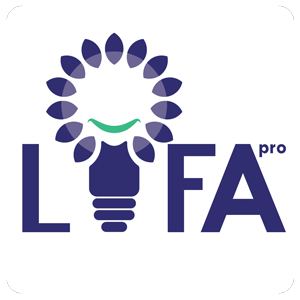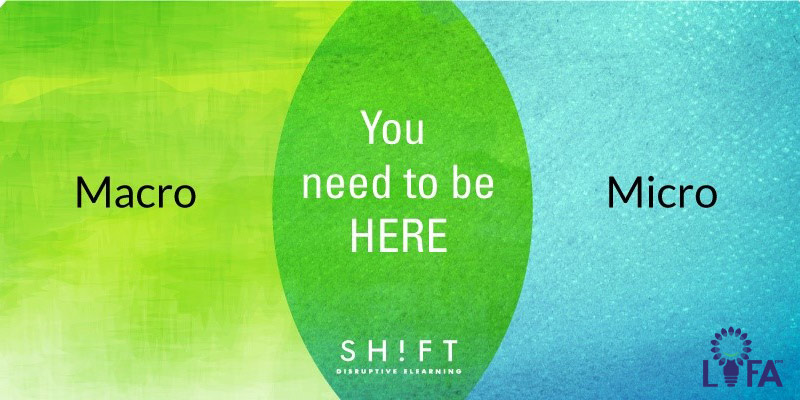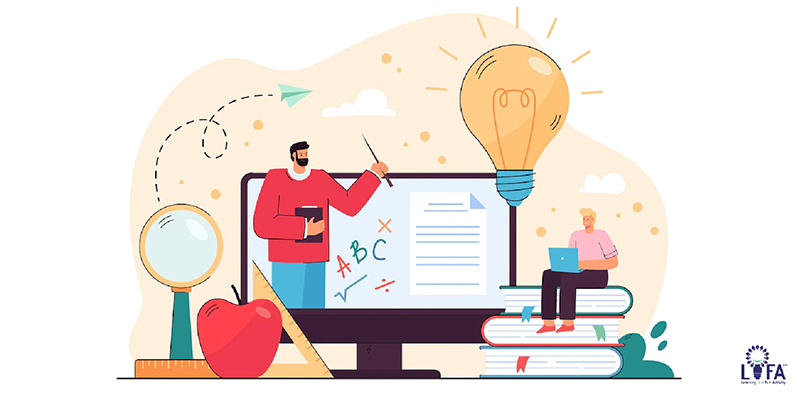
What is the Role of Microlearning in Different Fields of Industries?
April 4, 2022
How to Design an Effective Microlearning Strategy?
April 17, 2022How to Have a Higher Impact in Workspace Training by Combining Microlearning and Macrolearning
Nowadays, due to the increasing acceleration of science and technology, especially in microlearning and macrolearning courses, the efficiency of individuals depends to a large extent on the level of education which they see before and during their employment in the direction of their job; Otherwise, due to the complexity and all-roundness of the changes, they will not have the desired efficiency to perform their duties in the organization.
Today, as jobs become more complex and specialized and increase the speed of change and updating information, the need for staff training is felt more than ever. Also, the survival of organizations in today’s competitive world depends on the continuous development of capabilities. It is the employees themselves who make this possible through training. Change is an essential and inseparable part of education and social and technological advances play an important role in influencing this field. In this article, we tried to study Internal and external research to examine how to have a higher impact on workspace training by combining microlearning and macrolearning.
Corona pandemic caused emerge of microlearning and macrolearning
Before the Corona epidemic, the job learning process included technology-based “microlearning,” which was less formal and less structured than traditional training programs. A few years ago, leading analyst, Josh Bersin, popularized the idea of continuous, practical learning for real workspace problems as “on-the-job learning.” On-the-job learning is increasingly associated with access to timely, job-related content – often through laptops or smartphones, whether on a desk or in a production process.
Today, advances in the field of technology, teaching environment, education, content and methods, and management of educational systems have been extremely influential, and in line with these developments, modern techniques and tools, like microlearning have grown significantly in recent years.
Microlearning means that all e-learning materials are in small quantities so that you can understand the use of information in a short amount of time; Other concepts such as macro learning have proven to be the most effective way to create a learning path that achieves long-term results.
Recommended articles for further reading:
- How to create a microlearning framework – 4 key elements
- Best microlearning software to try in 2022
- Free microlearning platforms to try in 2022

Workspace training confront with modern techniques and tools
The boom in short-term digital learning in the workplace does not mean that corporate-based training or more structured on-the-job learning is lost. But this means that the expectations of employers and employees are changing, and they are guiding and measuring the data and algorithms learned by employees.
When it comes to employee training and development, employers prefer options directly aligned with their business goals and affect the outcome. Employees often want to develop skills that have long-term and beyond value. According to the results of the quarterly study, the company reported that sales of its services to employers increased by 75% compared to the previous year. It has more than 700 corporate customers, increasing 124% compared to last year.
Combining microlearning and macrolearning aims to reach a higher impact on the workspace among the employees. In recent years, microlearning in virtual education has become popular. Microlearning supports ubiquitous performance and helps with instant learning in many tutorials. It is a professional method; presenting the principles and strategies for implementing an approach requires understanding the concepts. Necessity, features, and comparison of its advantages and disadvantages can guide us in designing a combined method of micro-learning and macro learning to continue employee training in the job environment.
The findings indicate that combining micro-learning and macro learning methods not only tries to eliminate the shortcomings of traditional education but also has some advantages that can be learned to improve the organization’s overall performance by rapidly increasing employee productivity. The findings of this research Provide valuable insights into micro-learning and macro learning and help organizations train managers to find strategies to learn microlearning and macrolearning.
Combined method roles in microlearning and macrolearning
New methods suggest that the learner plays an active role and learns to be self-directed, independent, and flexible. The interactor has been emphasized in recent years. Significant and extensive changes have taken place in the field of education across the world so that it is possible this change is called a paradigm shift in learning. In this paradigm shift, the center of gravity of educational processes is a combination of microlearning and macrolearning method.
Learning is a change of fundamentals. In paradigm mode, it means teacher-centered, content-oriented, intervention-based training, and with the focus on leadership and management, changes in behavior have been desirable. While learning is a process based on work, its existence leadership learning, leadership, and management is more intensified. One that has recently been considered organizational learning is the use of microlearning and macrolearning together.
Microlearning is the technique of presenting learning content in small and micro pieces daily or a few days a week. It is practical. Short courses allow learners to be focused on both learning and working simultaneously. It is much easier for people to spend five minutes learning at work. Only when structural learning by combining microlearning and macrolearning is used as the main organizational training strategy and continuous optimization and development, it can be an effective way to have a higher impact on the workspace.
Macrolearning can create a community around you
One of the major disadvantages of microfinance is that the courses can be very short-lived. They are designed to be small and consumable, so they are often very popular. But without enough power, they can also lead to burnout.
Macro learning provides something for learners to learn by asking them to take a micro-course. The best way to encourage learners to connect with macro learning in this way is through the community. By creating a community around learning theory, discipline, or new lifestyles, educators can help learners become more strongly committed to their learning goals.
Macrolearning can be supported by microlearning
As we noticed, macro and micro are not opposing forces but complement each other. As macro learning can help you build a learning ecosystem for your course, microlearning can turn those great ideas into usable courses. In this way, macro and microlearning support each other. It is very easy for learners to skip several micro-courses without knowing how to relate them to something bigger. Still, macro learning can be reassuring, and microlearning can ensure that learners can access the content.
Perhaps one of the reasons we hear less about macro learning is that it is more difficult to break down into practical steps. Having such a scene can be more daunting than encouraging for coaches and teachers who are still planning to launch their first course. However, thinking extensively about course content can also inspire more topics. Tying your course to a bigger topic will ultimately encourage your learners to stay with you for a long time instead of taking a course and continuing.
Microlearning and macrolearning are the Ways of the Future
Today Another challenge is education, including those employees of organizations that due to work commitments, do not have enough time to take long-term trainings, even related to their job, and the training should be somewhat useful and mandatory to participate in these courses. On the other hand, this training is done at a high cost and inefficiency. It means a waste of money. Such cases have prompted education experts to look for solutions. These factors have led to the formation of microlearning education, which is cheaper and more effective.
It is a kind of informal learning to give human capital training based on workspace needs, concise and practical offers. These are short tutorials that are mostly done with a tool like a smartphone; for example, 5 minutes to meet educational needs and increase job efficiency is fun, attractive, and purposeful and due to repetition at appropriate intervals it makes concepts deeply understood and fixed in memory for a long time.
The limits of time in Microlearning and macrolearning
There is no time or place limit, and learners can access it whenever they want Managers in organizations choose the appropriate strategy for microlearning (self-learning leader, situational learning, and community-based learning) to produce micro-content. Content presentation Stub includes a short video, infographic, podcast, short questionnaire, screenplay, motion graphic, interactive PDFs, short story, summary of the book, gamification, gifs, simulation, etc., which should be followed in the form of micro-learning activities.
Microlearning and macrolearning principles
These principles include determining the microlearning strategy, combining microlearning and macrolearning, determining how to engage Active learners, having the characteristics of microlearning and macrolearning teaching content, and identifying learning target groups. However, it can be said that the first reason why organizations are welcome to combine microlearning and macrolearning methods is that it has advantages over disadvantages. A complete understanding of this issue can help make the best use of this type of teaching and learning.





2 Comments
What is the best way of combining them?
If you want to have a higher impact in the workspace, we combine microlearning and macro learning methods on LiFA. So you can use it.